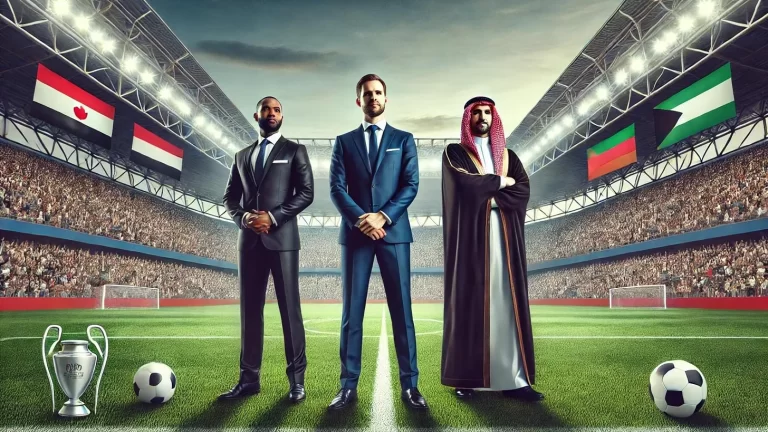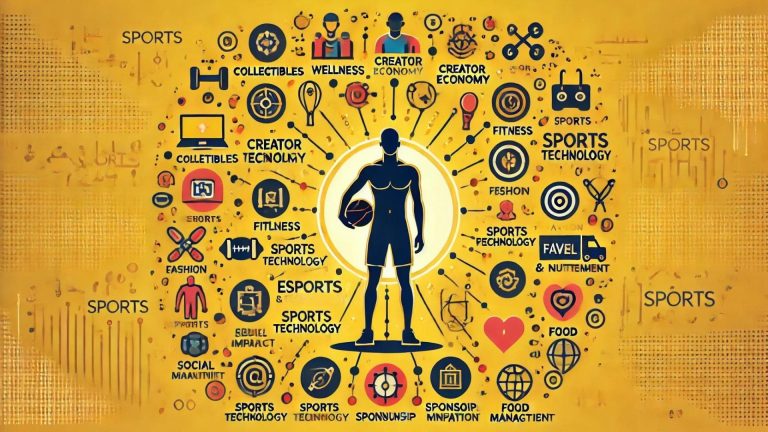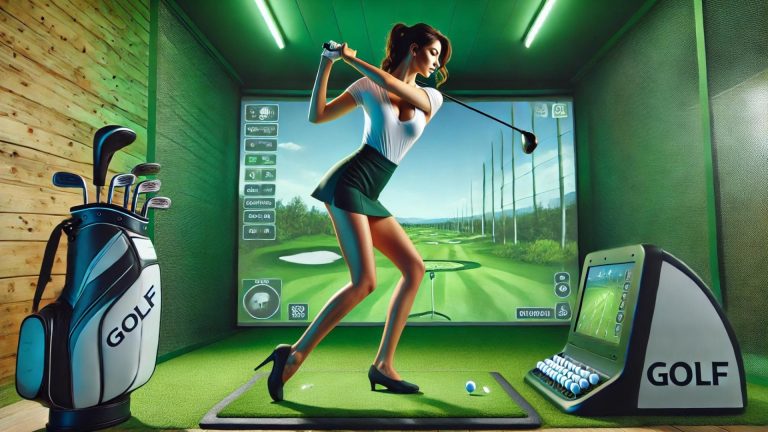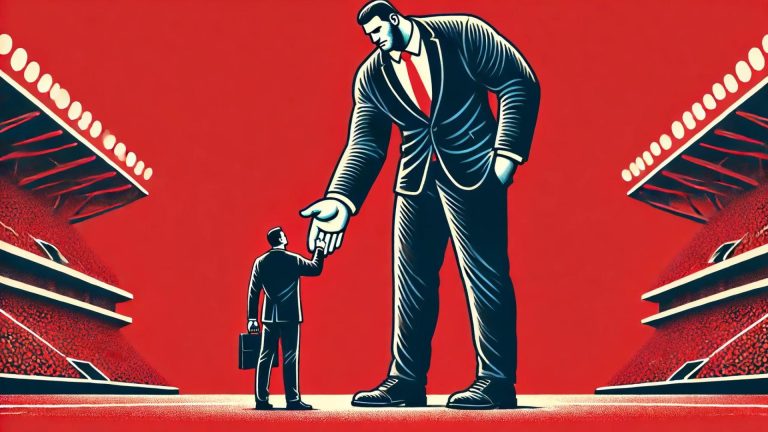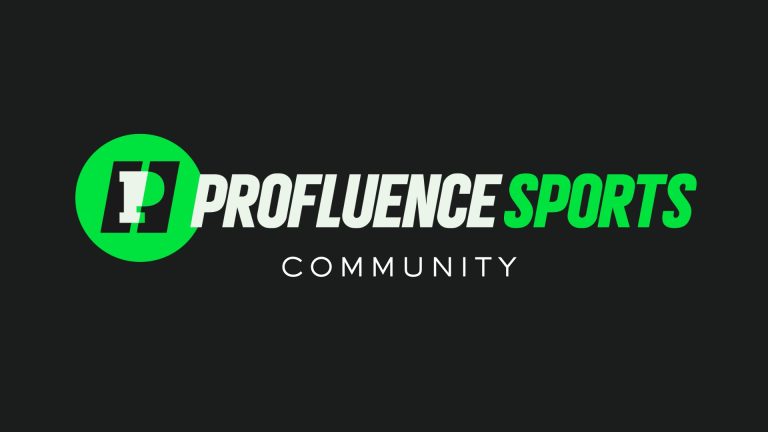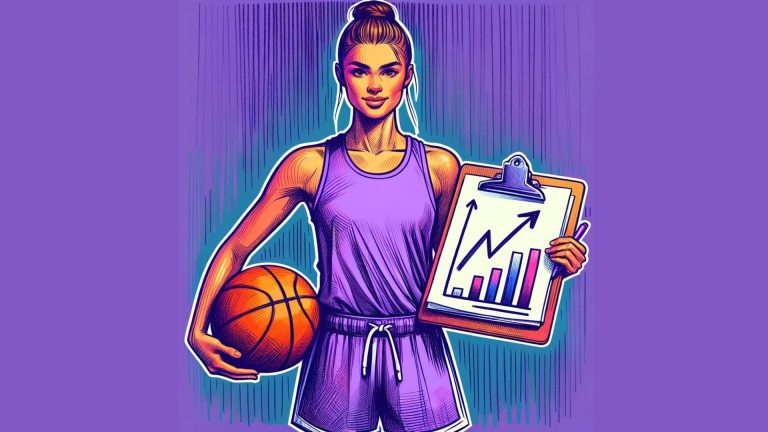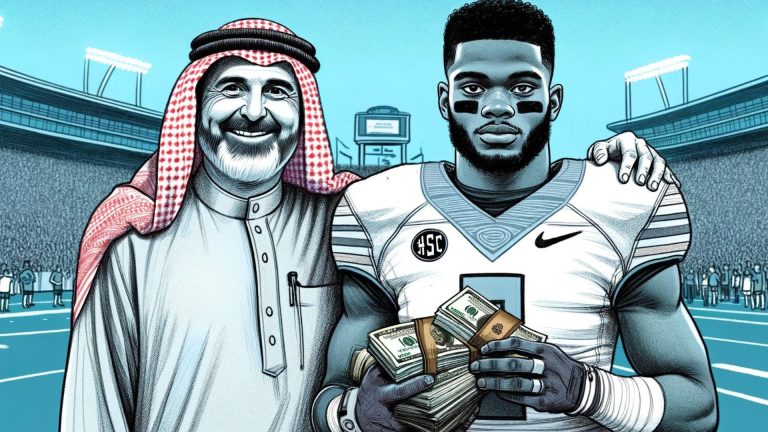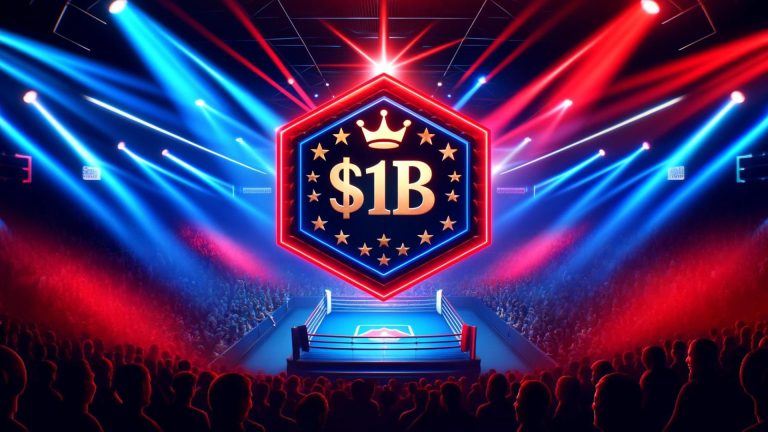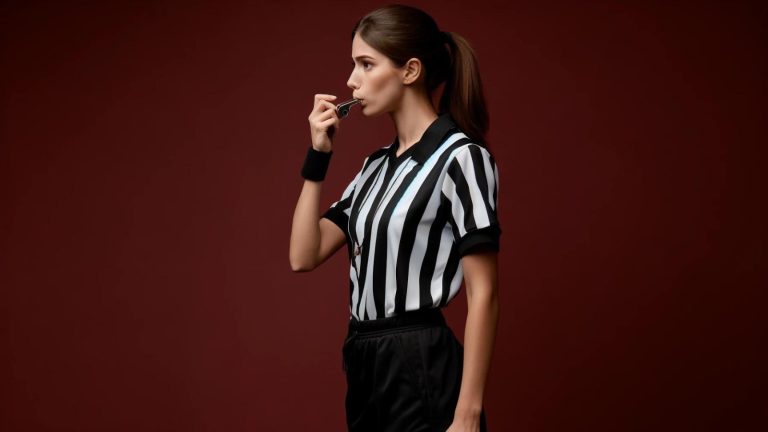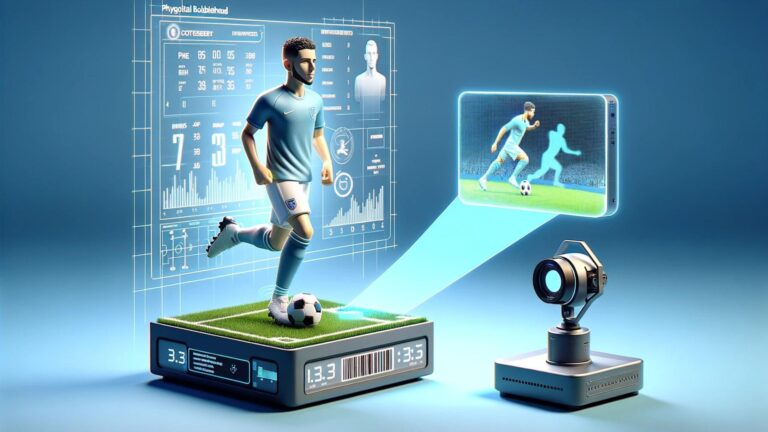Youth sports have silently grown over the last 20 years (and they’re only going to get bigger).
Wintergreen Research estimates that it’s a $24.9 billion industry and is expected to reach $77.6 billion globally by 2026.
For reference, the NFL as a whole is worth roughly $132 billion.
But interestingly…
The stats say youth participation is dropping (but even that may be a bit misleading).
Let’s Dive In 👇
Youth Sports Are Changing
A small percentage of athletes will ever go on to play in college.
And even fewer will get the chance to play professionally.
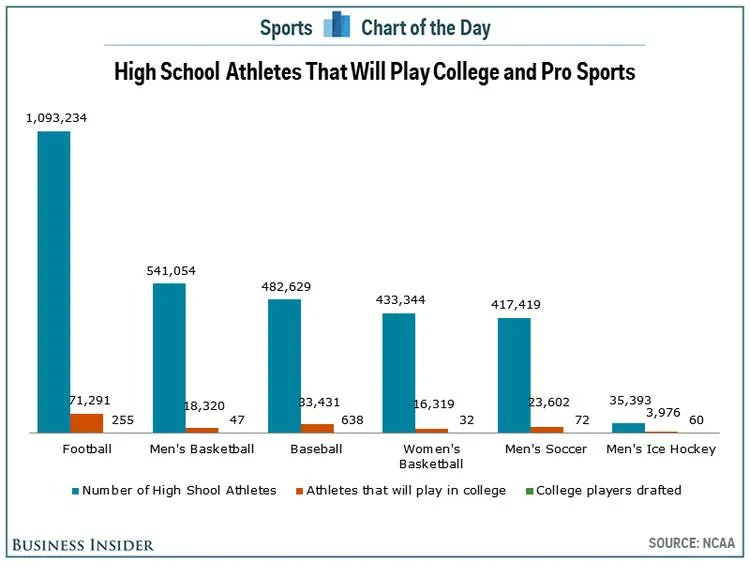
This is why with NIL heading downstream, sports are becoming more entertainment-focused — hence the rise of the athlete influencer.
But are youth participation rates actually dropping?
- Yes, when compared to a decade ago.
- No, when compared to a few years ago.
It’s complicated and the numbers aren’t always easy to calculate.
Here’s what they look like:
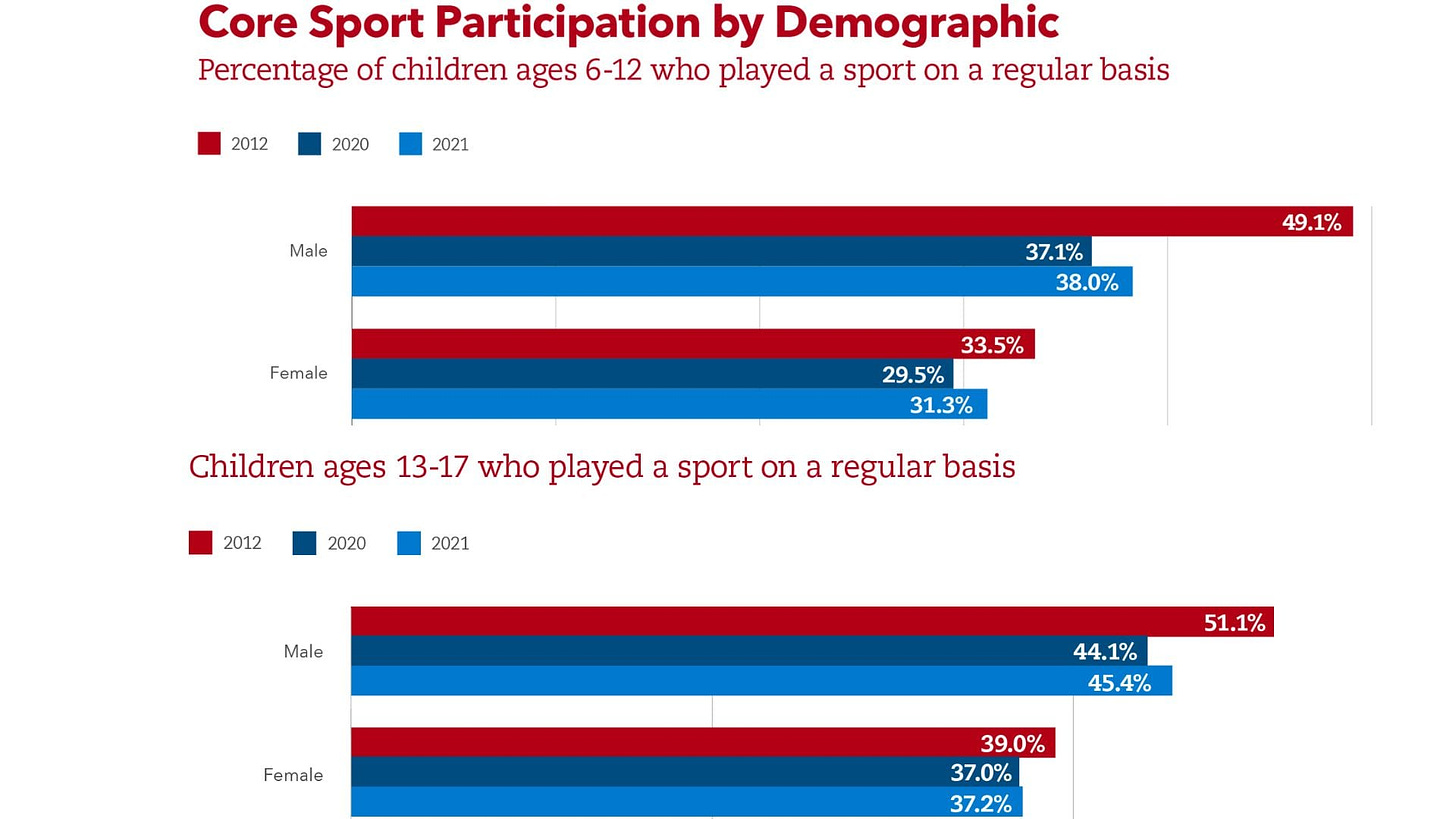
As you can see, more kids played sports in 2012 compared to today — yet there’s an increase in participation post-pandemic/post-NIL.
Most of it stems from good ole’ capitalism.
Let me explain.
Youth Sports Aren’t Cheap
Where there is demand — supply will be met. And that is the case with the massive growth of club/travel/AAU sports over the last decade.
And to me, this growth is just getting started.
However, there are some problems with pay-to-play.
And it all starts with…
Inequities on school teams.
Kids who can’t afford club soccer could play on their high school teams for free (although most high schools seem to have “participation” fees as well).
But even so…
These kids often have to compete against more experienced kids who come from families that can pay for clubs.
And this chart doesn’t feel right to me…
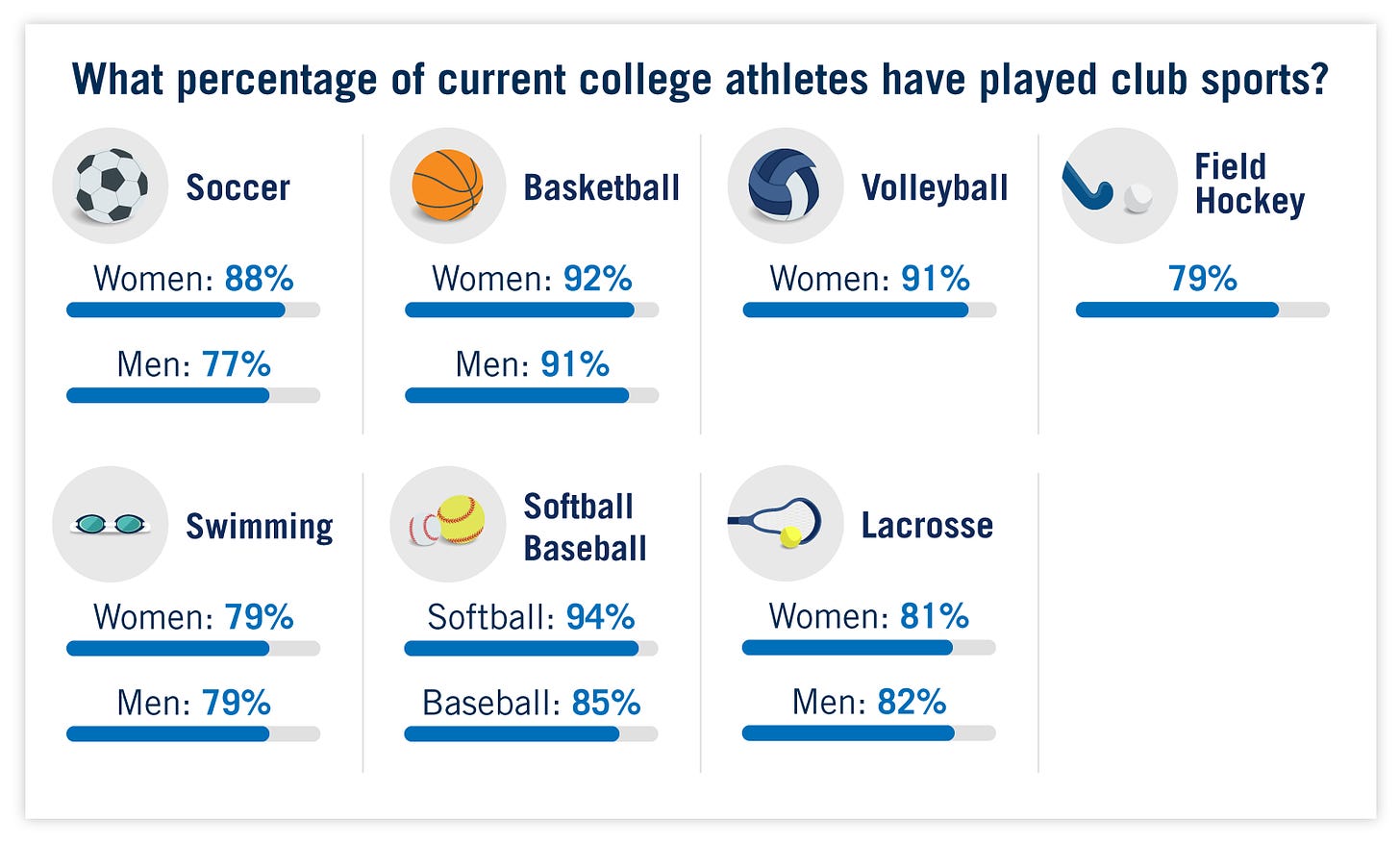
I haven’t heard of a male college basketball player in 2023 that didn’t play AAU in high school.
To me, at least in basketball, both men’s and women’s should be 99.9% on the chart above.
And clubs aren’t cheap.
The average family spends nearly $1,400/yr on sports activities per child (and even that feels extremely low to me).
What used to be considered fun, has become competitive and commercialized.
Most of this stems from a few things:
1. Rising College Tuition Costs
The value of an athletic scholarship increases every single year — and the cost of college is getting ridiculous at this point.
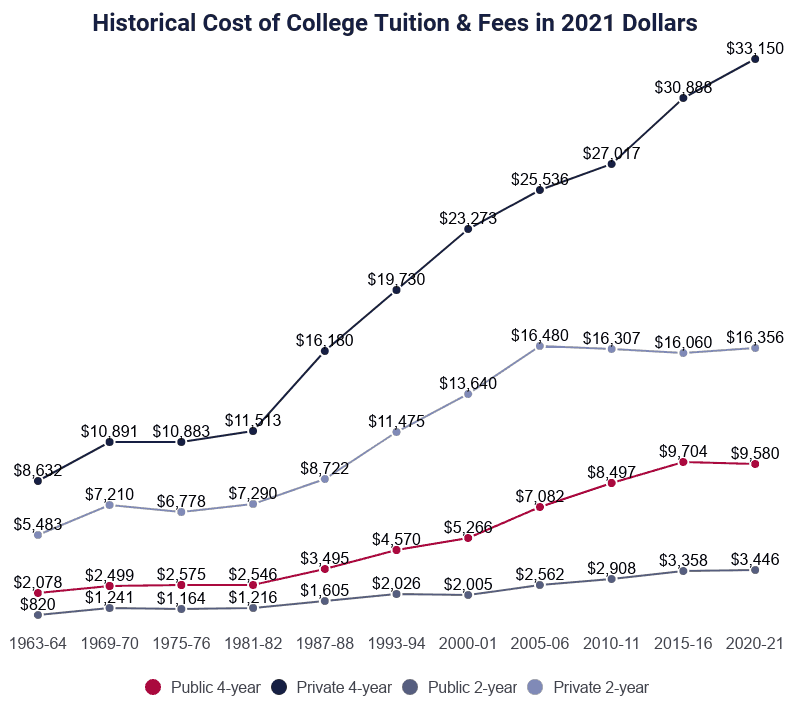
Many families now believe their kid’s only path to college is through sports.
And at times, the tradeoff can seem reasonable…
- Pay $10,000 for your kid to play on an AAU team.
- The kid earns an athletic scholarship worth $50,000/year.
- 2,000% ROI
But you also have to remember only 7% of high school athletes make it to college rosters (and most of them won’t receive a full athletic scholarship).
Even worse…
A lack of education in the space has parents spending loads of money for 5th-grade sports when nearly all college recruiting takes place during high school.
2. Specialization
Kids are specializing earlier (despite studies showing most pro athletes played multiple sports through high school).
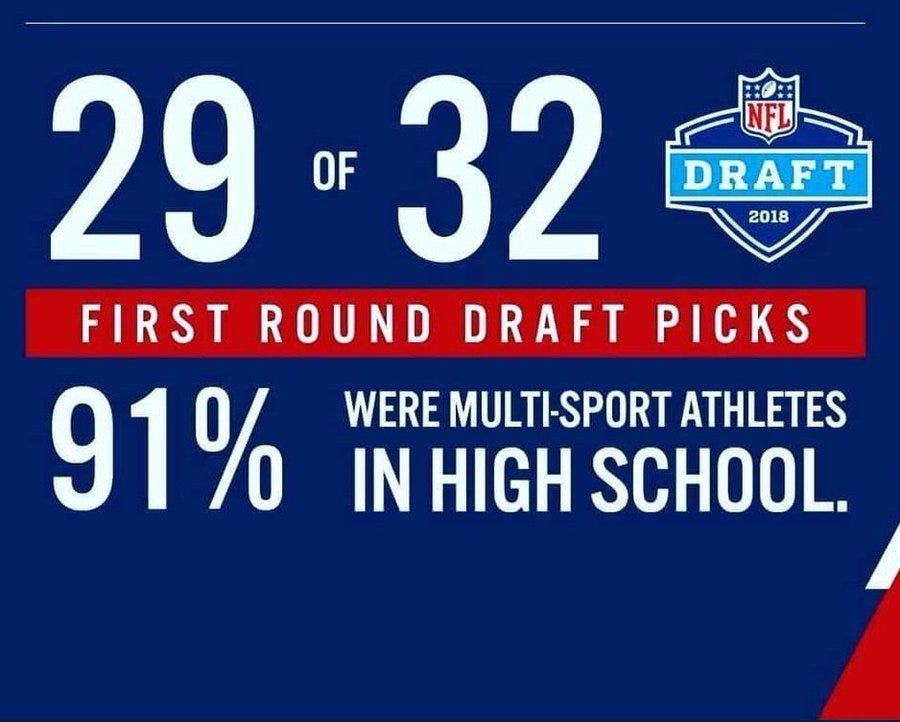
The fundamental flaw in American youth sports is by creating these travel teams at earlier ages, we’re pushing aside the late bloomers:
- the kid from the lower-income home that can’t afford the youth sports arms race
- the kid who doesn’t have a second parent to drive them to an endless array of practices and games
- the kid from a small town that doesn’t know the best travel teams are two counties or states away
And it’s not always the fault of the parents or the kids, but just how college coaches approach the space.
3. College Recruiting
College coaches prefer to recruit at AAU tournaments compared to high school games. That’s just the truth.
Why?
Easier to assess talent on a level playing field compared to high school.
Amateur club basketball already has a tier system:
- Shoe Leagues (Nike, Adidas, New Balance, Under Armour)
- Mid-Major Circuits (Hoop Group, Big Shots)
- Low-Tier Events (local tourneys)

Just like the NCAA has tiers of talent (D1, D2, D3) — so does AAU and even high school basketball.
It’s interesting to see how different America is approaching youth sports compared to Europe.
And with all this money floating around — people/organizations are making a lot of money off of 10-year-old girls’ volleyball, etc.
4. Esports
More kids are gaming these days.
It’s easier to pick up a video game controller than a baseball bat.
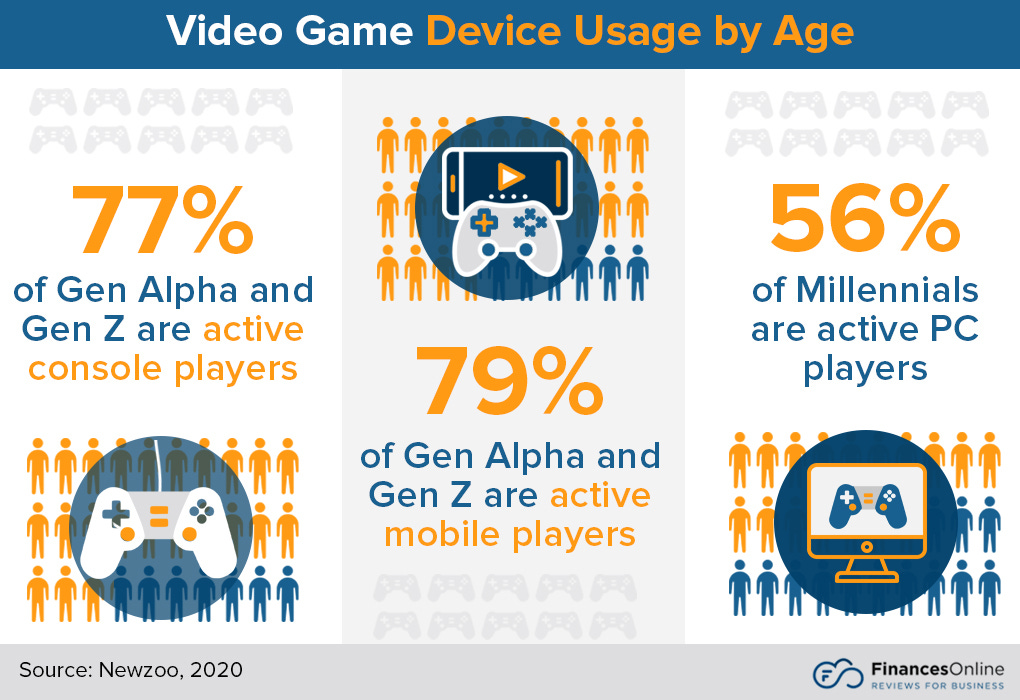
And esports knows how to extract money from its users.
So youth sports is trying to do the same…
Commercialization
Youth sports are becoming more commercialized by the day (for better or worse).
This is another reason why I advocate for paying college athletes because a full-ride scholarship isn’t actually free.
Parents pay thousands of dollars to get their kids in the right situations for college coaches to recruit them.
And there’s an opportunity cost…
The 3 hours spent focused on a sport could have been used towards working a job.
The question that remains…
What impact is NIL going to have on the already crazy space of youth sports?
Companies Building in the Space
With very few governing bodies, youth sports are extremely fragmented.
Some of the main areas where companies are being built:
- recruiting
- sponsorship
- team management
- apparel/merchandise
- club teams (AAU/travel)
- tournaments, showcases, events
- event management (ticketing, scheduling, etc)
NIL is going to take multiple years to reach youth sports, but when it does, you’ll feel its effect in nearly every vertical.
TeamSnap CEO Peter Frintzilas believes it will take new innovations 3-5 years to go from college to youth sports.
From software companies helping high school athletes run their own camps to apps that provide brands access to high schoolers.
The Future of Youth Sports
Whatever your opinions are of youth sports…
It’s become commercialized and it isn’t going to stop. As they say “the cat is out of the bag”.
With that said…
You can either fight the system or help make it better.
High-level club programs are starting to act more like college programs and big brands are starting to subsidize the costs.
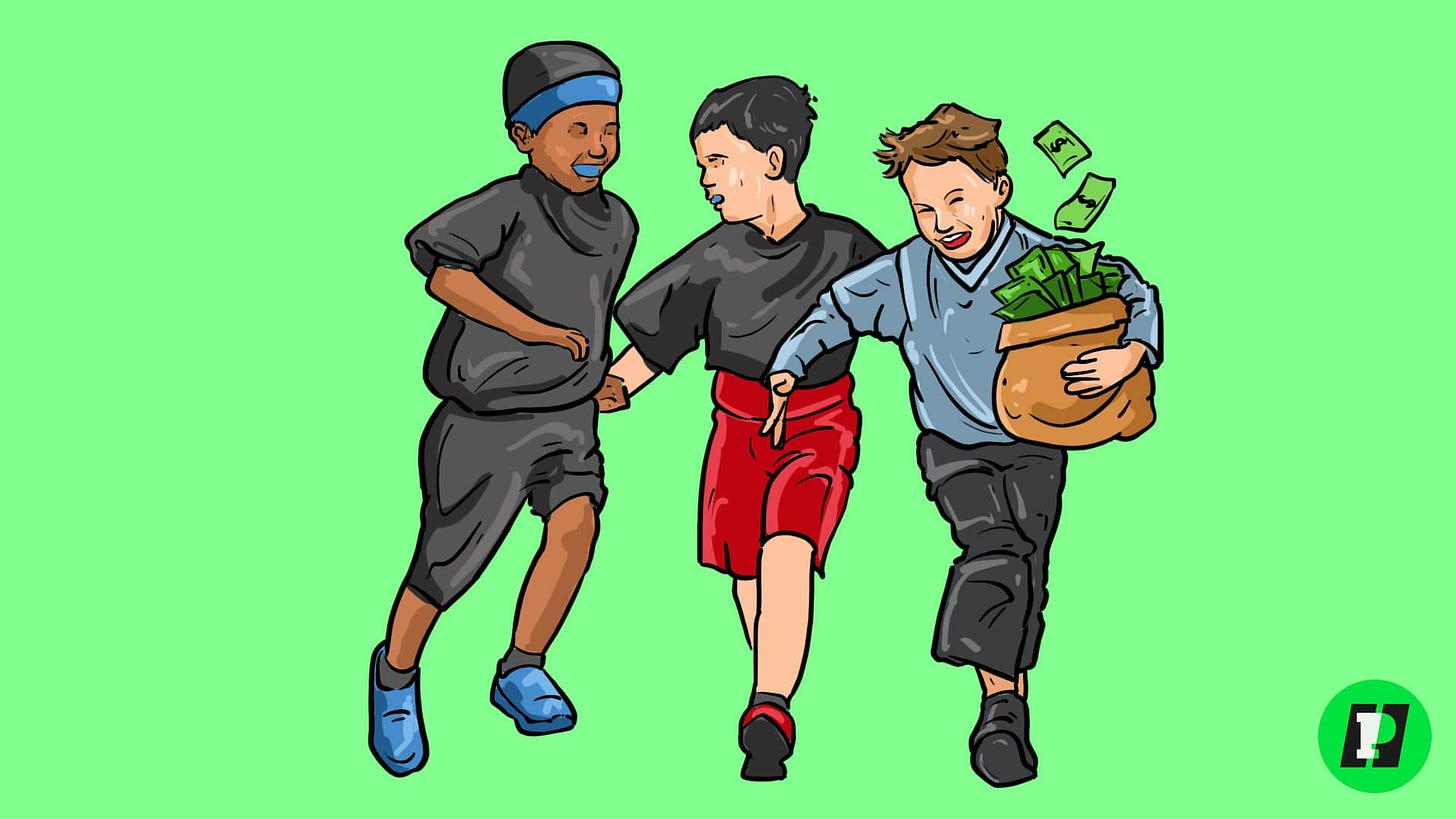
If done right, we’ll be able to set up a system where companies take on most of the costs for athletes/parents — but we’re a long way from that.
While there is still a lot of money to be claimed in the youth sports ecosystem — there are also a lot of great ways to positively impact the next generation.
A handful of pro athletes already own AAU clubs or run camps during their offseason.
But I expect to see more get involved in not only the commercialization opportunity but also the philanthropy.
In my opinion, the athlete making millions per year that came from humble beginnings should feel a responsibility to help those in a similar position.
Nonetheless, the future of sports is exciting (and the youth levels are going to benefit drastically from the innovation).
Going Forward
I’ll leave you with this…
If you’re thinking of building a company in sports — the youth sports market would be a good market to target.
If you’re already building a company in sports — thinking about how to maximize youth sports would not be a bad conversation to have internally.
As Pete talks about in the podcast — it will take another 3-5 years for NIL to be fully felt in youth sports.
